8 Best Types of Talking Pet Birds
8 Best Types of Talking Pet Birds
Birds have many attractive qualities, but their ability to repeat human speech is one that makes them truly unique among other types of companion pets and one that has ensured their popularity for generations. You are likely to find, though, that the birds' talents for mimicry still pales in comparison to the fact that they are charming, engaging, and truly remarkable. Here are eight of the most popular talking bird species so that you can appreciate more about what each impressive pet has to offer.
01of 08
Budgies (Parakeets)
It comes as a surprise to many that the tiny budgies, also known as budgerigars or simply as parakeets, can actually talk as well if not better than some of the larger parrot species. Some budgies have even been known to develop vocabularies of hundreds of words. With their gruff voices, it can sometimes be hard to decipher what exactly budgies are saying, but those who keep and care for them often find budgies to be quite the chatterboxes nonetheless.
Species Overview
LENGTH: 7 inches
WEIGHT: 1 ounce
PHYSICAL CHARACTERISTICS: Light green body with black wing markings and yellow head; captive-bred colors of blue, gray, green, white, violet, yellow/blue
02of 08
Amazon Parrots
Another bird group that is known for having exceptional speaking abilities is the beautiful and captivating genus of Amazon parrots. These birds are not only known for building large, impressive vocabularies, but they are also renowned for their exceptional voice clarity that rivals all other types of parrots. In addition to talking, Amazon parrots are great at learning tricks, making them a very entertaining bird for those who want a pet that a whole family can interact with often.
Species Overview
LENGTH: 13 to 15 inches
WEIGHT: 7 to 25 ounces
PHYSICAL CHARACTERISTICS: Green body feathers; over 15 subspecies of Amazon Parrot with different head colorings
03of 08
Quaker Parrots
The adorable Quaker parrots, also known as Monk parakeets, have long been prized for their talking talents and charming personalities. Quakers are able to build quite large vocabularies, and some Quaker owners swear that their birds are even able to use their words in context. Quaker parrots are a good choice for people seeking the fun of a larger parrot but in a more compact package.
Species Overview
LENGTH: 11 inches
WEIGHT: 4 to 5 ounces
PHYSICAL CHARACTERISTICS: Bright green, white or blue body; gray breast, cheeks, and throat resembles colonial-era Quaker clothing; orange beaks
04of 08
Indian Ringneck Parakeets
Hailing from India and Asia, the charming Indian Ringneck parakeets have been kept as pets for centuries; at first, they were reserved for royalty only, specifically because of their incredible speaking abilities. Centuries ago, monks observed these birds in temple gardens where they recited daily prayers; they noticed that the wild birds repeated the prayers they were hearing. This led to the belief that these birds were holy or divine.
Species Overview
LENGTH: 16 inches
WEIGHT: 5 to 6 ounces
PHYSICAL CHARACTERISTICS: Bright green body; red and black neck ring on male, no ring or a pale shadow on female
05of 08
African Grey Parrots
The African Grey parrots have seen a rise in popularity as pets, largely due to studies that have provided greater insight into the extreme intelligence of these birds. Greys can develop an extended vocabulary. Most pick up words quite readily and speak with great clarity. There are common reports of owners who have been fooled into thinking that they were talking to a human family member in the next room, only to find that it was their pet Grey mimicking the person's voice. These birds are fascinating, but they do require a significant amount of specialized care, and at least five hours per day of socializing, so bringing one home is not a choice to be taken lightly.
Species Overview
LENGTH: 13 inches
WEIGHT: 15 to 18 ounces
PHYSICAL CHARACTERISTICS: Varying shades of gray on the body; red tail feathers
06of 08
Cockatoo
Hailing from Australia, the cockatoo is another large parrot species that has displayed speech abilities in captivity. While it has been reported to be difficult to train Cockatoos to talk, these birds merely have a softer, sweeter speaking voice than other parrots. Cockatoo trainers must use careful listening skills to both hear and understand the soft words from their birds. Cockatoos also require some socialization limits in their daily routine. Otherwise, separation anxiety from over bonding can create a health issue.
Species Overview
LENGTH: 18 inches
WEIGHT: 14 to 28 ounces
PHYSICAL CHARACTERISTICS: Mostly white body; some yellow feathers underneath the wings; reddish eyes in females, brown to black eyes in males
07of 08
Eclectus Parrot
You might think that the most interesting thing about Eclectus parrots is their beautiful coloring and stark differences between male and female plumage. And yet Eclectus Parrots have strong speech capabilities; most readily mimic their owners. Having only a 30-year lifespan, these shorter-lived talking companions may be at lower risk of outliving their owners.
Species Overview
LENGTH: 14 inches
WEIGHT: 12 to 19 ounces
PHYSICAL CHARACTERISTICS: Green male body with blue and red, yellow on the head; red female body with purple, blue and some yellow
08of 08
Severe Macaw
The largest of the mini macaws, the Severe macaw's large personality makes it a favorite with bird lovers. These small macaws aren’t as verbose as some other parrots, but they do have the ability to mimic speech. Like all macaws, they are quite skilled at learning short phrases and singing snippets of songs even though their speech isn’t always clear. Severe Macaws tend to be loud birds for their size. But with adequate socialization, Severe macaws can learn to use their inside voices as they like to bond with happy owners.
Species Overview
LENGTH: 15 to 20 inches
WEIGHT: 16 ounces
PHYSICAL CHARACTERISTICS: Shiny green body; chestnut-colored patches on the foreheads and under the beaks; a patch of iridescent blue on the crown of the head; red patches on the edges the wings; tail feathers blue with red undersides
-
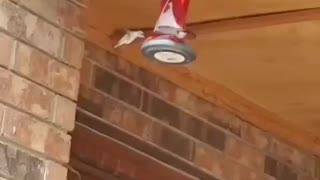 0:23
0:23
kittyklo
3 years agoHummingbirds are the best birds
413 -
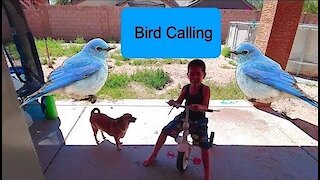 1:56
1:56
Noah Game Adventures
4 years agoFunniest Talking Birds Compilation
69 -
 0:36
0:36
shyboy
3 years agoTalking kitty
101 -
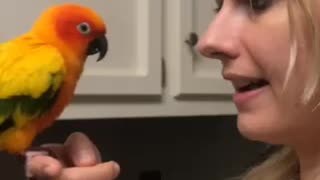 0:27
0:27
parrotsparty
3 years agoSun conure talking
90 -
 3:30
3:30
jbflynn
3 years agoTalking To God
127 -
 0:27
0:27
Davidtheexplorer
3 years agoTalking with Skyla
207 -
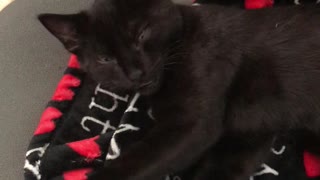 1:06
1:06
Kristy Speaks
3 years agoTalking Kitten
1004 -
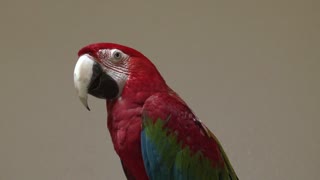 1:10
1:10
Zelle
3 years ago $0.01 earnedKona the Parrot talking
1823 -
 0:55
0:55
osamakh
3 years agoBirds Starlings
241 -
 1:09
1:09
Sobolixa
3 years ago $0.08 earnedTalking cat Pastelenokminikha.
2062